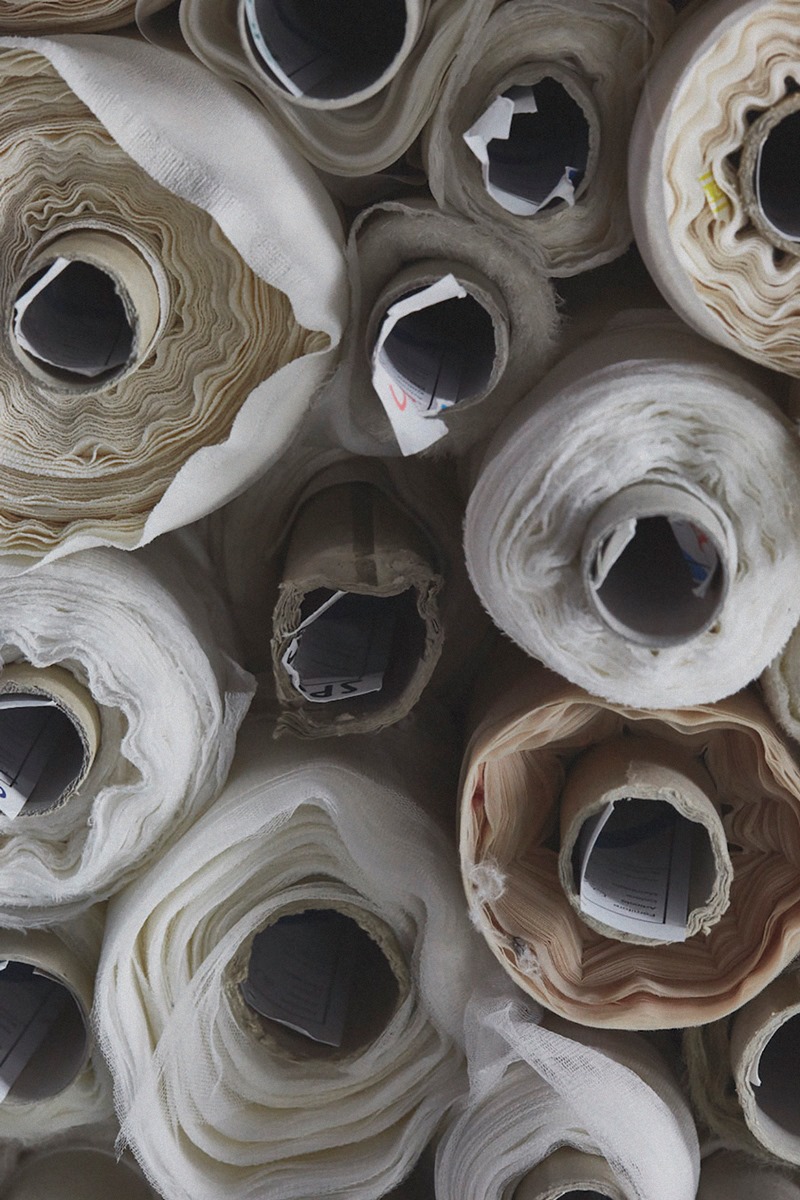Fashion
Material headache problem
What green materials have the potential to be a long-term substitute for synthetic materials? The answer is still quite vague for the fashion industry.
Material headache problem
Polyester, a man-made synthetic fiber born in 1951, is also the main source of material favored in the modern fashion industry because of its cheap, durable, and versatile properties. Polyester accounts for 52% of the weight of product materials, besides other synthetic fibers such as elastane, nylon and acrylic…
Different from natural fibers such as cotton, linen, animal skin, polyester (same types) other synthetic fibers) does not take long to grow and harvest, the production cost is suitable for the huge pressure of the mass fashion market. The use of polyester in fashion production is forecast to grow at 4.1% a year and by 2030, polyester will account for about 63% of the total market product. This inevitably leads to direct environmental consequences: an increase in CO2 and CH4 (methane) emissions.
With such a perspective, fashion has been facing drastic change pressure. And finding a green alternative to polyester is one of the vital directions for brands. We all understand that, to change or reform an entire ecosystem as cumbersome as fashion takes a lot of time, effort and money.
The first changes have come from the big guys who have weight in both their words and their products. In 2017, Kering Group, which owns brands such as Gucci, Balenciaga, Saint Laurent… committed that by 2025, they would cut the impact on the environment by 40% in the production process.
“We understand that, if we only rely on materials available in the market such as organic cotton, organic wool, cashmere produced according to sustainability criteria… our reduction target can only be achieved the same. very 20%. To get to 40%, we need to find new solutions that are more unexpected, highly effective and broader,” said Marie Claire Daveu, sustainability manager at Kering.
Since 2013, the group has set up a chain of innovative materials research and development labs, which store samples of sustainable ingredients from around the world. Up to this point, Kering’s chain of laboratories has owned up to 2,800 samples of different materials.
A difficult reality for all brands when they want to steer themselves towards a green path is the balance between humanity and the input costs of production. Researching and putting into use sustainable green materials is not a problem that any brand can solve like the giant Kering corporation is doing.
For the general market, even big brands like Nike, Zara, H&M, GAP… can’t resist the tremendous pressure of demand from customers. They choose solutions that minimize negative effects in the production process: instead of original polyester (virgin polyester), they increase the use of recycled polyester (recycled polyester).
According to reviews, using recycled polyester can reduce CO2 emissions by up to 32% compared to using original polyester. Nike is currently the leading brand in this. On average, Nike converts up to one ton of waste a year into inputs for its products. H&M, GAP, J Crew… are also on the list of more than 70 brands committed to using 45-60% recycled polyester by 2025.
With the help of technology, finding alternative sources of polyester is no longer too difficult. Among them is mycelium, the material created from the roots of a fungus grown in a laboratory combined with agricultural waste. This material can be tanned and dyed like animal skins. It is researched and developed by MycoWorks (a start-up in California).
Mycelium is being designed and used by several major brands. Hermès has announced that it will produce the famous Birkin bag with mycelium instead of animal skin. adidas announced the use of mylo (a leather variant of mycelium) for their beloved Stan Smith shoe. Stella McCartney has also designed corset tops, ball pants with this material.
Food waste is also one of the abundant sources of raw materials for fashion to take advantage of in the current context. Paul Smith and Hugo Boss have launched sneaker models made of pinatex – material from pandan leaves. Salvatore Ferragamo and H&M present “Capsule” collections using orange fiber, a silk-like material made from the leftovers of citrus juice production.
Tommy Hilfiger makes his shoes out of frumat, a material that is made from the remains of an apple during industrial processing. Of course, these efforts have yet to be replicated on a large scale because of the constraints associated with testing, production, and retail costs for the end customer. Anyway, these are the remarkable creative efforts of the fashion industry in the process of recovering the world environment.
You can click on the links below to owning our products
Shark Why Hello You Look Delicious Restroom Decor Classic Metal Signs
Sailor Every Great Journey Begins With A Trip To The Bathroom Classic Metal Signs
Cat Some Come To Sit and Think Restroom Decor Classic Metal Signs
Skull Some Come To Sit and Think Restroom Decor Classic Metal Signs
Cycling You Gotta Roll With It Restroom Decor Classic Metal Signs
Custom Auto Mechanic Garage I Can Fix Anything Classic Metal Signs
Contact us:
- https://www.facebook.com/Allyoloswag.Store
- https://twitter.com/StoreSwag3
- https://www.pinterest.com/allyoloswagstore689/
- https://www.pinterest.com/allyoloswagstore689/
Collection: https://allyoloswag.com/product-category/furniture/metal-signs/
Homepage: https://allyoloswag.com/

